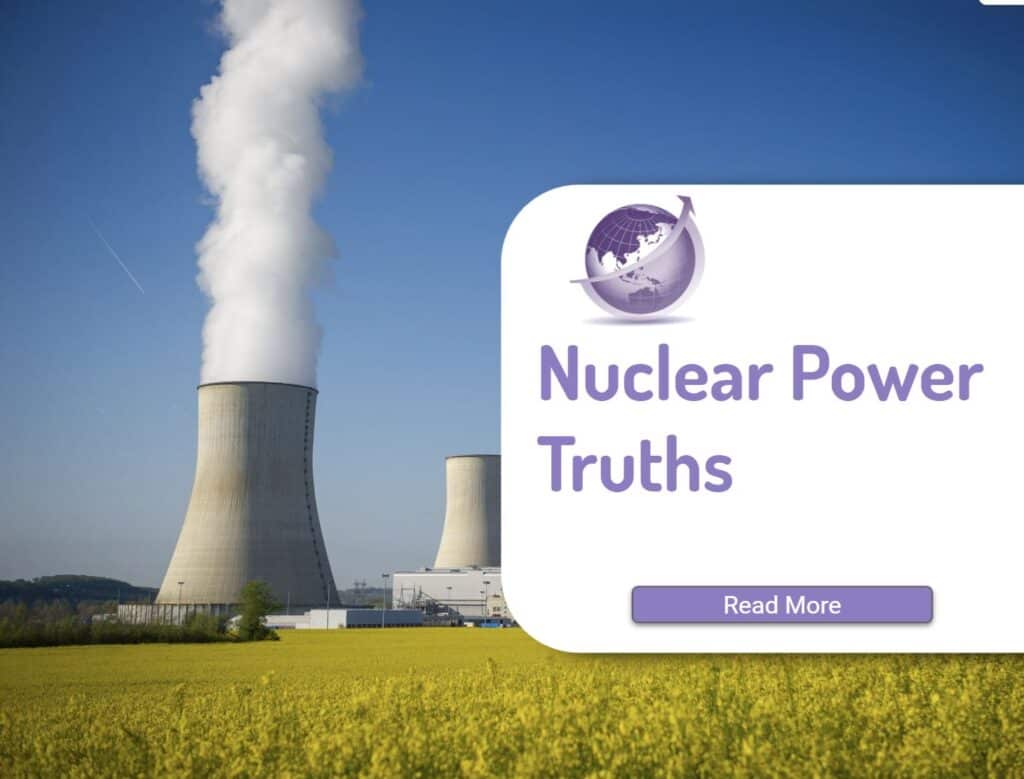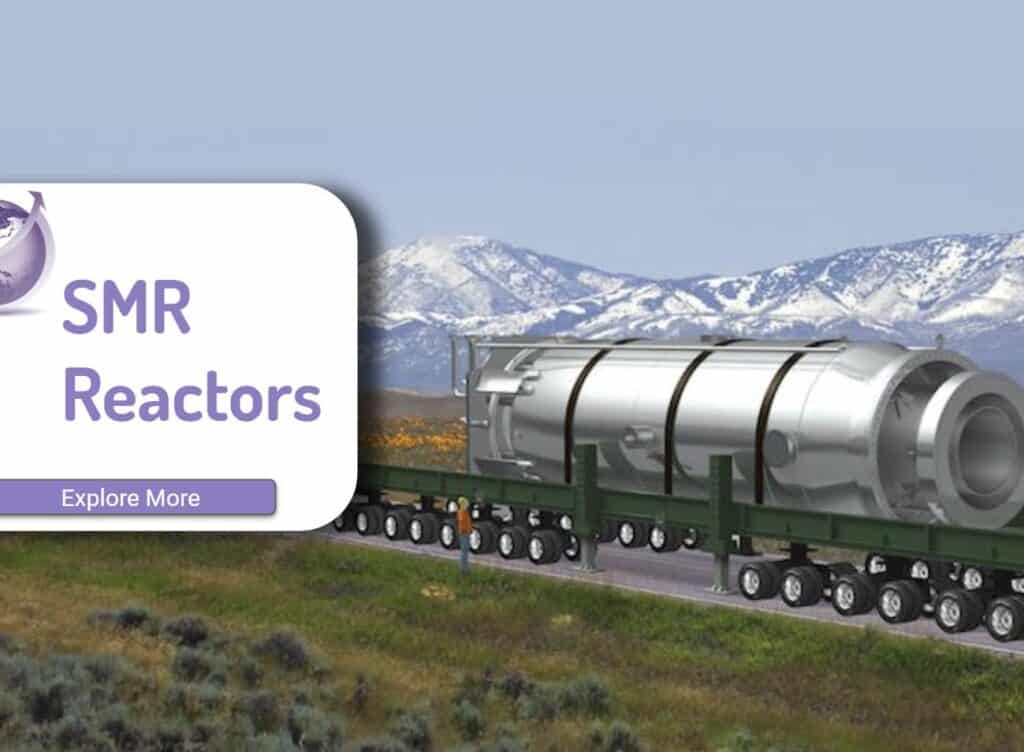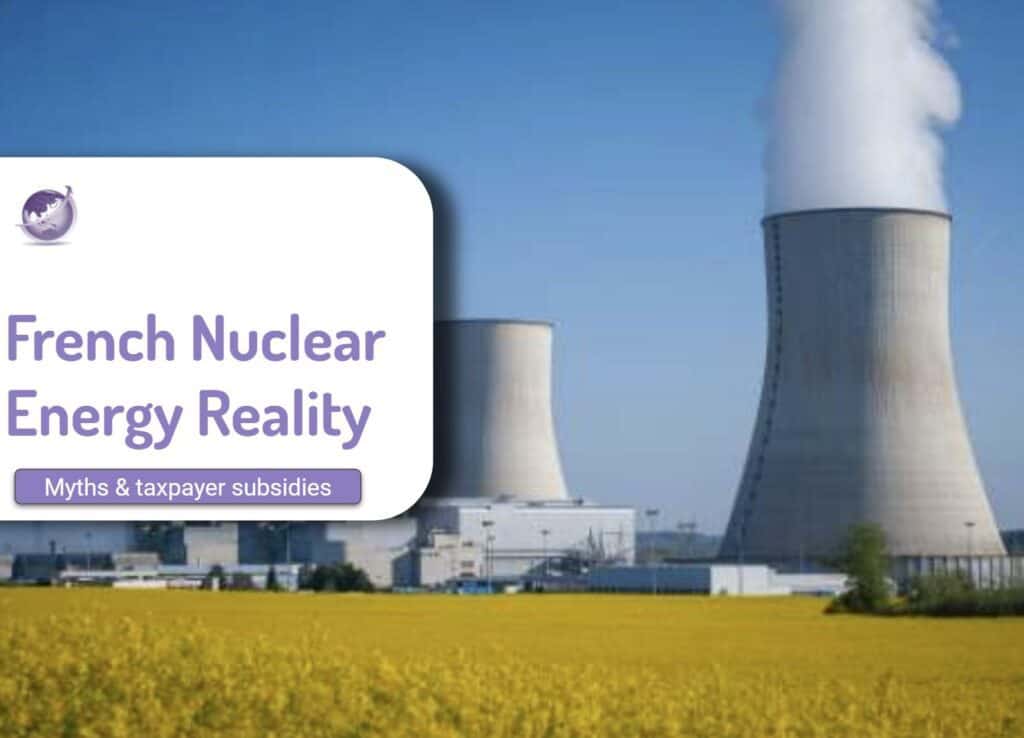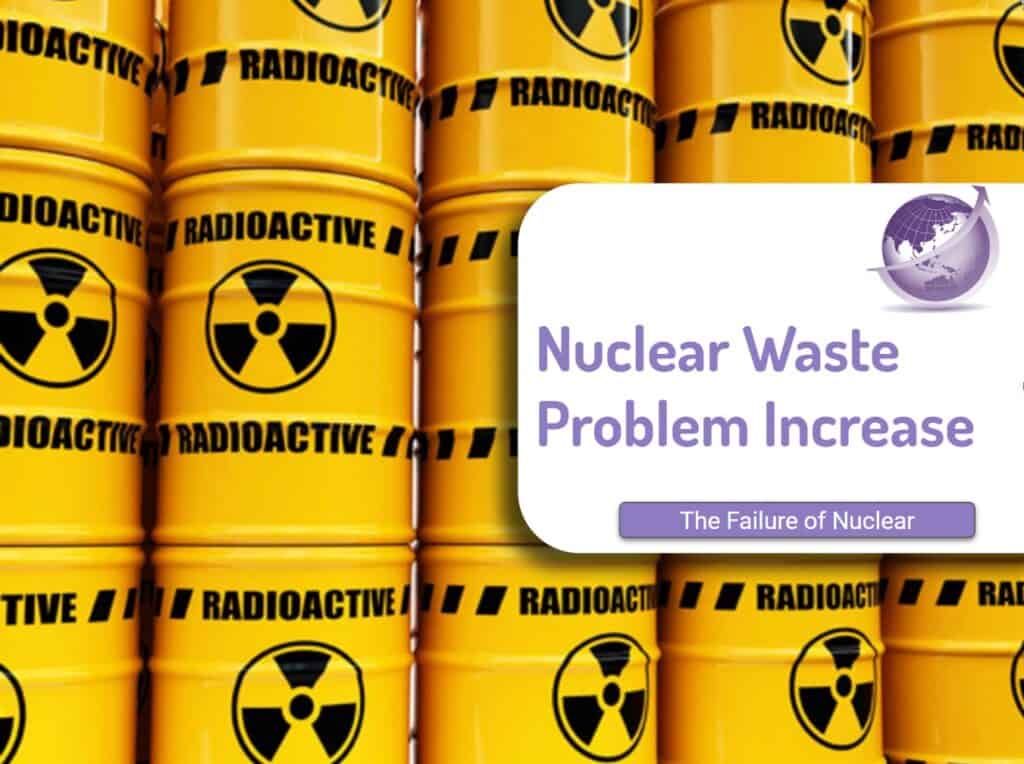Conventional nuclear is dying – why is nuclear power not an option? Current projects just kick the can down the road. We do not have 18 years for nuclear to decarbonised the planet. Fusion, though still 30 years away may solve energy demands of the future. Nuclear subsidies and new nuclear plants are an inefficient use of scarce investment. Emissions will reduce with existing clean, safe and low cost renewable energy.
History
Russia’s first nuclear power plant, and the first in the world to produce electricity in 1954, was the 5 MWe Obninsk reactor. (67 years ago) and closed 48 years later. The 440 nuclear plants many constructed in the 60’s, will require decommissioning by 2050. Construction of the only new plant in Europe, Hinkley C, is delayed by 5 years and $28 billions. Nuclear plants using low enriched Uranium require refueling about every 10 years – costing hundreds of millions and the downtime taking up to 18 months.
Back in the 50’s people assumed nuclear could supply 20% of the world’s energy, and grow to over 50% but it did not materialise.
- Ongoing accidents which often were severe enough to cause widespread damage
- The conversion by multiple countries to turn their reactors into military uses and created atomic bombs and military use
- Failure to sort out waste.
- Waste takes 10,000 years to degrade
- Social license, widespread pollution from military testing in the Pacific, USA, Australia has soured the social license
Subsidies
Governments subsidize nuclear. The Manhattan Project which developed the atomic bomb, employed more than 130,000 people and cost nearly US$ 2 billion (equivalent to US$ 23 billion in 2007 dollars). Governments hide the extent of the subsidies and it is the taxpayer that pays for the cost with higher power prices. The capital cost to build nuclear is often 2 to 3 times initial estimate, and the money hidden in military or other such spending.
France’s history with nuclear power runs deep. The country runs 58 nuclear power plants, which sprang up largely as a response to the oil crisis in the 1970s. France began shutting down its oldest nuclear plant in 2020 after 43 years of operation, the first in a series of closures the government has proposed though the the country won’t altogether abandon its reliance on nuclear power. The closures are part of a broad energy strategy to rely more on renewable energy sources. That strategy would see French dependence on nuclear energy from supplying three-quarters of its electricity to about half by 2035.
Global Use
IAEA PRIS, World Nuclear Association Reactor Database (Table ). There are about 250 research reactors in the world as well for research and pharmaceutical products.
Generating capacity remains stable over past 2 decades . Old station retirements match new stations. Any growth has primarily been updates of existing reactors.
Issues Why Nuclear is Not An Option
Nuclear power generation has multiple problems. The following sections lay out some of the concerns.
- Social License
- Waste
- Technology
- Accidents
- Water Use
- Cost
- Lack of Development
- Designs
- Carbon Emissions / Renewable
- Fission not fusion.
- Summary
Technology
The technology has not really changed over 64 years. While one would expect mature technology, there is little sign, particularly with dealing with waste or improving safety.
While France is the poster country and have over 60 plants with about 80% of their power coming from nuclear they have decided to move away and reduce dependency. Fundamentally, technology or new technology is little changed since the 50’s. There have been a few new designs and warships still use reactors not much different from 1950s
The largest improvement has been the refurbishment of existing plants and and increasing their output.
Costs of Fuel
The front-end fuel cost cycle of 1kg Uranium as UO2 fuel. Prices are approximate as of end of 2021. At 45,000 MWd/t burn-up, this gives 360MWh electricity per kg or equivalent to 120 tonnes of coal. ie. fuel costs are 0.46 c/kWh
| Process | Amount required * price | Cost | Proportion of Total |
|---|---|---|---|
| Uranium | 8.9kg U3O8 x $94.6/kg | $842 | 51% |
| Conversion | 7.5kg U x 16 | $120 | 7% |
| Enrichment | 7.3 SWU x55 | $401 | 24% |
| Fuel Fabrication | per kg | $300 | |
| Total | $1660 |
Lazard assumes a cost of $.85/MMBTU for fuel. With a 33% thermal efficiency which is about the same as a coal plant, it’s the equivalent of a fuel-only cost of $9/MWh. The World Nuclear Association estimates this cost even lower at less than $5/MWh.Considering the benefits, it’s an incredibly cheap form of fuel and has driven many countries to see a future in nuclear power. But fuel with this level of power requires incredibly sophisticated plants to ensure it’s properly harnessed and safe. Building these can get very expensive.
Small Modular Reactors
Small Modular Reactors (SMR) proponents argue manufacturing in consistent design in factories will be cheaper than bespoke large systems. However, there are over 17 different types of SMR designs, reactors and there are still no demonstration units.
Conventional large reactors are unique builds and still use designs from decades ago.
China should be the natural leader. They are with Renewable energy. Their population is close to water. (see water demands) and have been doing nuclear since 1980, first with the French, then Germany. Pilots with first one and then another.
They have 51 plants and 16 of the 54 nuclear plants under construction globally.
Thorium Reactors
They have just commissioned a pilot thorium reactor in Gobi desert.
The reactor uses thorium and molten salt. The salt becomes the fuel. Thorium is a widely available product. The absence of water means that it avoids a situation where meltdown is a risk. The technology means it does not need water, so they have positioned the plant in the Gobi desert
There is another problem. Thorium reactors can create U233 which can be used to build atomic bombs
Probably unable to scale the plant. Given that the USA shut down their thorium reactor in the 1960’s this may not be a success.
Nuclear Fusion
Nuclear fusion is a dream, with ubiquitous power and no pollution. 100 m years after big bang, there was the first fusion stars. In fusion, small particles get bigger, unlike fission large atoms, tjat get smaller. This has been in research since 1940’s and requires sophisticated engineering. There is no C02 and no waste. No space is needed. Various research groups are working on the technology, and recently the USA pilot experiment just did 23 times more than previous. Getting close.
Currently it is only about proving, and minimal energy is produced – enough to boil a kettle. This is a decades-long quest.
RE is cheap so we should use the dollars from conventional nuclear development and from gas exploration.
3 times more RE to make 1.5 achieve
Hinkley C Nuclear Plant
Hinkley C is due to open in June 2026 and will cost between £22bn and £23bn and latest estimate is at £25bn . The planned twin unit UK EPR is capable of generating 3,260MW of secure, low carbon electricity for 60 years. It will be the most expensive nuclear plant in the world. Planning started in 2007. It’s three times over cost and three times over time where it’s been built in Finland and France,” says Paul Dorfman, from the UCL Energy Institute. “This is a failed and failing reactor.”
| Year | Capital Cost £ billion | Year Finished | Stripe Price £/MWh | UK Average Wholesale Price £ |
|---|---|---|---|---|
| 2007 – Planned | 8 | 92.50 | 100 | |
| 2013 Negotiations with EDF | 50 | |||
| 2017 – Started | 14 | 2025 | 120 | |
| 2023 – Roof on (BBC Report) | 33 | 2028 | 150 | 70 |
The UK has a history of failed reactors. As part of the development of the atomic bomb (the Manhattan project), the UK built about 35 reactors and was well equipped in science and technology. Thatcher tried to privatise in 1987, but no private company wanted the risk to operate or the decommissioning liability. With a bailout of 3 billion in 2002 British Energy did not want to build new ones. By 2005 after intense lobbying by the nuclear energy, the UK Govt decided to build more and by 2008, Hinkley C was the first to be approved. British Energy was sold to the French EDF and EDF decided on a European pressurised reactor (EPR) which already had 3 x cost overruns elsewhere.
66,000 GWh (or 20 times more. take less than 5 years and provide power for 10 to 15 years even before the nuclear was built
Water for Cooling is Major Challenge
Most nuclear plants are built near the sea or in rivers due to the huge amount of cooling required. The Chinese Thorium reactor is built in the Gobi desert as it relies on molten salt and does not require water to operate. The Nuclear Energy Institute estimates that, per megawatt-hour, a nuclear power reactor consumes between 1,514 and 2,725 litres of water. Once-through water use is 25,000 to 60,000 litres per MWh, and recirculating consumption is 600 – 800l so Hinkley would need about 2m litres per hour. The hot water released (not the steam) can be a serious problem in downstream waterways.
Waste
For a full discussion check out this article on waste here and essentially shows there are 4 issues.
- Cost – billions – paid for by the taxpayer
- Quantity (hundreds of thousands of tonnes)
- Stability of storage site
- Radioactivity for 100,000 years
Decommissioning Nuclear Sites or Clean up
The cost of clean up is staggering.
In UK, see its own explanation. https://www.gov.uk/government/publications/nuclear-provision-explaining-the-cost-of-cleaning-up-britains-nuclear-legacy/nuclear-provision-explaining-the-cost-of-cleaning-up-britains-nuclear-legacy
- The Nuclear Decommissioning Authority owns 17 sites
- Costs currently £3 annually
- One site, Sellafield is 75% of the cost.
- 2/rds met by Govt
- The 2019 forecast is £124 Billion over the next 120 years but could be between £99 and £232 Billion or a discounted provision of £131B
Accidents
Accidents happen. By their very nature “Black swan events” cannot be predicted. Most reactor designs are such that if a system fails (eg cooling pump, rods) then what happens you get a run away reaction from the reactor.
As of 2014, there have been more than 100 serious nuclear accidents and incidents from the use of nuclear power. Fifty-seven accidents or severe incidents have occurred since the Chornobyl disaster, and about 60% of all nuclear-related accidents/severe incidents have occurred in the USA. see https://en.wikipedia.org/wiki/Nuclear_and_radiation_accidents_and_incidents
Chornobyl Accident
The Chornobyl accident in 1986 occurred during a safety test on the steam turbine of an RBMK-type nuclear reactor. A combination of operator negligence and critical design flaws had made the reactor primed to explode. Instead of shutting down, an uncontrolled nuclear chain reaction began, releasing enormous energy. The resulting steam explosion and fires released at least 5% of the radioactive reactor core into the environment, with the deposition of radioactive materials in many parts of Europe. According to the official, internationally recognised death toll, just 31 people died as an immediate result of Chernobyl while the UN estimates that only 50 deaths can be directly attributed to the disaster. In 2005, it predicted a further 4,000 might eventually die as a result of the radiation exposure.
Fukushima Accident
The identified root cause was the seawall was too low. Had it been built another 5m tall to deal with the 15m (1 in 1000 ) tsunami wave, water would not have flowed into the plant.
The seawal was deemed too costly when they built the plant. The emergency pumps were in the bottom of the reactor and not watertight so the ingress of water stopped them. Once the pumps failed, the cores started to overheat, high levels of Hydrogen built up and then exploded. Poor training (operations) also contributed. There are no direct causes of death, but the estimated toll from mass evacuation and relocation is as high as 2200 and there are beginning to have elevated cancer rates. The clean up of land and plant is expected to take a further 30 more years and $76 billion to remove intact nuclear fuel, recover resolidified melted fuel debris, dismantle the reactors, and dispose of contaminated water. Removing the fuel debris is a tougher task, with no target completion date yet.
3 Mile Island
The accident to unit 2 at 3 Mile Island happened at 4 am on 28 March 1979 when the reactor was operating at 97% power. It involved a relatively minor malfunction in the secondary cooling circuit which caused the temperature in the primary coolant to rise. This in turn caused the reactor to shut down automatically. Shut down took about one second. At this point a relief valve failed to close, but instrumentation did not reveal the fact, and so much of the primary coolant drained away that the residual decay heat in the reactor core was not removed. The core suffered severe damage as a result. The operators were unable to diagnose or respond properly to the unplanned automatic shutdown of the reactor. Deficient control room instrumentation and inadequate emergency response training proved to be root causes of the accident was a combination
Military Use
Countries that have adopted nuclear for power production have inevitably used their nuclear facilities to build out military expertise
Nuclear Weapons
- United States
- Russia (successor to the Soviet Union)
- United Kingdom
- France
- China
States declaring possession of nuclear weapons
- India
- Pakistan
- North Korea
States indicated to possess nuclear weapons
- Israel
Countries with nuclear power plants include:
But China is Different?
One would expect China to be different. Their story is that for the first decade, they used French technology. German technology followed then now they have done it themselves. As of 30 June 2020, China has 47 operational nuclear power units and 11 nuclear power units under construction. Nuclear power accounted for 4.88% of the total electricity mix in 2019, and two units (Yangjiang-6 and Taishan-2) were connected to the grid in 2019. (IEAE Report) They have more wind and solar power installed in in 2020 installed about 10GW of thermal power plants and 112GW of renewable power generation.
China has ordered power transmission firms to connect a minimum of 90 gigawatts (GW) of wind and solar capacity to the grid this year, the National Energy Administration said on Thursday, as part of a new policy initiative aimed at meeting its low-carbon targets.
The NEA also said it will set targets for the transmission of renewable power rather than the construction of new capacity in a bid to avoid waste and ensure that wind and solar plants can sell all their electricity on the market.
China, the world’s biggest greenhouse gas emitter, has vowed to increase its non-fossil fuel energy consumption to around 20% of primary energy use by 2025 and to around 25% by 2030. (Reuters 2021) As of end 2020, China had total installed solar and wind capacity of 535 GW, but only 48GW of nuclear.
While often touted as a proponent of nuclear, they are faced that it is expensive, not renewable and slow to build.
Nuclear is Finite – but Low Emissions?
Nuclear power is not renewable power. Uranium is the main fuel for nuclear reactors, and it can be found in many places around the world. In order to make the fuel, uranium is mined and goes through refining and enrichment before being loaded into a nuclear reactor. The vast majority of nuclear power reactors use the isotope uranium-235 as fuel; however, it only makes up 0.7% of the natural uranium mined and must therefore be increased through a process called enrichment. This increases the uranium-235 concentration from 0.7% to between 3% and 5%, which is the level used in most reactors.
For more information read here
Nuclear fuel pellets, with each pellet – not much larger than a sugar cube – contains as much energy as a tonne of coal. (ie. about 25 MW)
The pellets need to be replaced every few years.
The reduction of carbon emissions will be only achieved by lowering the carbon footprint of the following
- Concrete and steel used in construction
- Mining
- Refinement
- Waste
Alternative Investment – Nuclear Vs Renewable
In the current Net Zero by 2050, nuclear has no role. Too slow, too expensive, too much risk of military use and 30 times the waste problem
| Nuclear | Solar + Firming | |
| Capital Cost | £25 billion ($USD33B) | $38B |
| Generation Capacity | 3 GW | 760 GW |
| Lifetime | 60 | 30 |
| LCOE (per MWh) | $148(existing plants) | $45 |
| Years to Construct | 20 | 2 |
Sources
- Notes from The Angry Green Energy Guy (https://theangrycleanenergyguy.com/podcast/episode-53/)
- Renewable energy versus nuclear: dispelling the myths 2016 by Mark Diesendorf (Read more here EnergyPost.eu)
- International Atomic Energy Agency https://www.iaea.org
- Nuclear economics – lessons from Lazard to Hinkley Point-C John Poljak 2024 https://illuminem.com/illuminemvoices/nuclear-economics-lessons-from-lazard-to-hinkley-point-c









